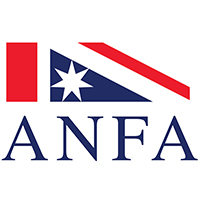Important Facts
National Flag Day Facts
The Australian Flag was first flown at the Royal Exhibition Buildings, Melbourne on 3rd September 1901, in the presence of the first Prime Minister of Australia, the Hon. Edmund Barton and Lady Hopetoun, wife of our first Governor-General. Australian National Flag Day was formally proclaimed on 3 September, 1996 as an annual celebration.
The centenary of The Flag was commemorated on 3 September 2001. The 100th anniversary of National Flag Day and the original ceremony involved a enactment of the original flag raising ceremony by Prime Minister John Howard, MP, at the Royal Exhibition Buildings, Melbourne.
Each school throughout Australia is encouraged to hold a special ceremony and/or flag raising to commemorate Australian National Flag Day on 3 September.
What happened on National Flag Day in 1901?
The first National Flag Day was held on 3 September, 1901 at the Royal Exhibition Buildings, Melbourne. As the flag was raised all schools were requested via telegraph to raise their Australian flag at the school assembly being held at the same time.
What happened on September 3, 2001?
On National Flag Day of 3 September 2001 the ceremony was re-enacted.
Who designed the Australian flag?
Did you know that one of the 5 people credited with the design of the Australian national flag was a Victorian schoolboy? To find out more go to: Ivor Evans
Which other countries use the Union Jack in their flag?
Describe their flags and explain why they include the Union Jack. To find out what other countries use the Union Jack in their flag go to: http://www.thecommonwealth.org/
What can you do if your school does not have an Australian flag?
If your school does not have an Australian flag you can request your local Member of Parliament to supply you with one. To find contact details go to: http://fed.gov.au
The Aboriginal people and the Torres Strait Islander people use which flag?
Describe these two flags and explain their significance. The Aboriginal people and the Torres Strait Islander people have ‘proclaimed flags’. To see them and find out more about their significance you can go to the website: Indigenous Flags
What is the Commonwealth of Nations?
There are 54 member countries of the Commonwealth of Nations. As a class, students discuss what the Commonwealth is, its purpose and list possible member nations. Students can check their answers and find out about the flags of these countries by visiting : http://www.thecommonwealth.org/. Use this information to develop a world map showing the location of Commonwealth countries.
When and why do we fly the Australian flag?
Flags are used in Australia to demonstrate our national identity. We use it at patriotic ceremonies and at public occasions such as at the Olympic Games. Public buildings such as the Melbourne Town Hall, Parliament House and the Governor’s residence fly our flag. Brainstorm all the different places you have seen the Australian flag flying. Find out what it means when the flag is flown upside down. Why is the flag sometimes flown at half-mast? Use this information to check students’ answers and include important additional data.
On what official occasions, other than National Flag Day, do we fly the Australian flag?
There are 7 other special days that are official flag flying days other than National Flag Day on 3rd September. Students should discuss what these other days are. Use this website to check their predictions: Important Days. Investigate the significance of these days.
What are our national and state Coats of Arms and emblems?
Describe the national coat of arms and flora and fauna emblems of Australia. The Australian Commonwealth Coat of Arms was granted by the Sovereign and fulfills traditional purposes. It is an emblem signifying the national unity of Australia and serves as a sign of identity and authority. ‘Arms’ consist of distinctive objects arranged in significant ways to distinguish the owner of the particular Coat of Arms. The grant of arms to individuals, organisations, towns and states has its origins as a mark of royal favour dating back to the Middle Ages. The complex and stylised art of arranging arms in systematic ways to express identity is known as heraldry. To find out about the Coats of Arms and the emblems of Australia and states and territories go to: http://fed.gov.au/emblems.htm. Ask students to find out where each of these flora and fauna emblems can be found in Australia.
How was the Patriotic Ceremony conducted in 1901?
In 1901, once a week, children were organised into the form of a hollow square facing the flagpole. [The Victorian “Education Gazette and Teachers’ Aid” outlined the procedure]: “When, at a given signal, the flag is run up, the boys should salute, and the girls stand to attention. Then all, placing the right hand on the left breast, should say the following words simultaneously:-
‘I love God and my country; I honour the flag; I will serve the King, and cheerfully obey my parents, teachers, and the laws.’
Immediately afterwards, taking the time from the teacher, or some one appointed for the purpose, three cheers for the King should be given, the boys uncovering their heads.”
[One would expect similar ceremonies to have been held in each state]
Resources. The following materials are available from Ausinfo
Emblems of Australia Poster, Woolworths Ltd, Ausinfo. (Ausinfo Catalogue Number 9925872)
Flags and Emblems of Australia, Simon and Schuster, Ausinfo,1995. (Ausinfo Cat No 9616918)
The Australian Flags Book, Commonwealth of Australia, 1999 (Ausinfo Cat No 9812583)
Acknowledgement: This is a shortened version of a Project Sheet prepared by the Victorian Education Department for its Centenary of Federation “Federation 100 Projects“
